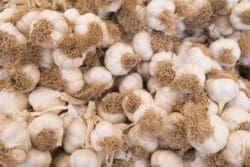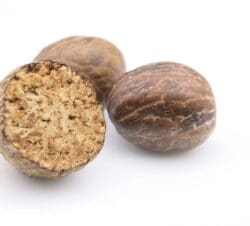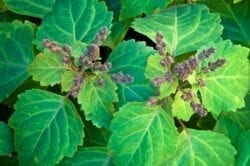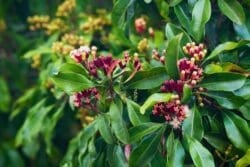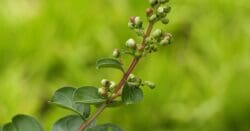
Clove – Global Market Update
Clove Overview
Cloves are the ripe, unopened flower buds of the Syzygium aromaticum tree, which is endemic to the Maluku Islands of Indonesia. Today, clove is grown in many regions including Indonesia, India, Sri Lanka, and Madagascar.
Clove trees are widely renowned by farmers due to their extreme productivity: clove buds are harvested just before blooming season, with the stems removed shortly afterwards for use in both the spice and the essential oils industry. The tree leaves are harvested all year, so long as conditions are dry.

As of 2022*, the top exporters of clove materials (whole fruit, cloves, and stems) are:
• Madagascar – 46% of world exports ($272 million)
• Singapore – 16% ($94 million)
• Indonesia – 9.62% ($56 million)
• United Arab Emirates – 7.63% ($45 million)
• Tanzania – 7.12% ($42 million)
*Data obtained from Trend Economy
Clove – Madagascar
Clove production in the eastern coastal region of Madagascar represents a significant portion of the island’s exports, all of which is grown and manufactured by particularly vulnerable smallholders. Products from clove trees, alongside vanilla products, account for the largest sector of Madagascar’s agricultural exports, and form a core part of the nation’s economy.
The main clove crop in Madagascar runs from September to March. In October 2023, Madagascar was required to withhold exports of clove products until a review was conducted to ensure certifications complied with industry regulations. Madagascar is currently awaiting the issue of clove export permits to be resolved before resuming trade and export of new materials.
As of October 2024, preliminary assessments of clove bud productivity in Madagascar indicate a 50-70% reduction in this year’s harvest when compared to the previous year. New harvest projections for clove bud are now between 6,000 MT and 8,000 MT, which represents a stark contrast compared to the 17,000 MT of last year.
The productivity of each clove crop always plays a direct impact in the current state of the global essential oils market. However, there are numerous ancillary factors that can greatly affect the production and distribution of clove oils including carryover, labor, shipping, and other logistics.
Despite the recent reduction in harvest size, new clove material from Madagascar is expected to enter the market on schedule, and price fluctuations will largely depend on the availability of carryover and supply from other sourcing locations.

Clove – Indonesia
Indonesia produces approximately 110,600 MT of cloves each year and accounts for 70% of the world’s total clove production. However, the nation only exports 15% of its production, mainly as clove buds and spice.
There are two main clove crops in Indonesia: the first crop runs from February to April, and the second crop runs from September to November. The first crop of 2024 was delayed due to poor weather conditions, and yields were 30% lower than previous years. The upcoming second crop is still too early to predict, though weather conditions in Indonesia have proven to be quite difficult for farmers in recent months.
The cigarette industry is one of the largest buyers of clove buds from Indonesia, and demand has continued to increase in recent years. This has placed additional strain on the supply of raw materials for clove oil, leaving much smaller quantities for the essential oils industry. Despite its enormous position within the clove industry, Indonesia is the world’s largest importer of cloves from other regions including Madagascar, Comoros, and Zanzibar. The consumer demand for clove products is so high that the nation requires additional supply just to meet its own internal consumption needs.
As of 2024, the market for Indonesian clove oil has been very short, and high demand has placed strong pressure on prices at-source. Availability of Indonesian clove oil remains low, and freight challenges have exacerbated these issues, causing multi-factor disruptions to both pricing and shipping. Prices are expected to continue firming in the coming months.

See all info of:
